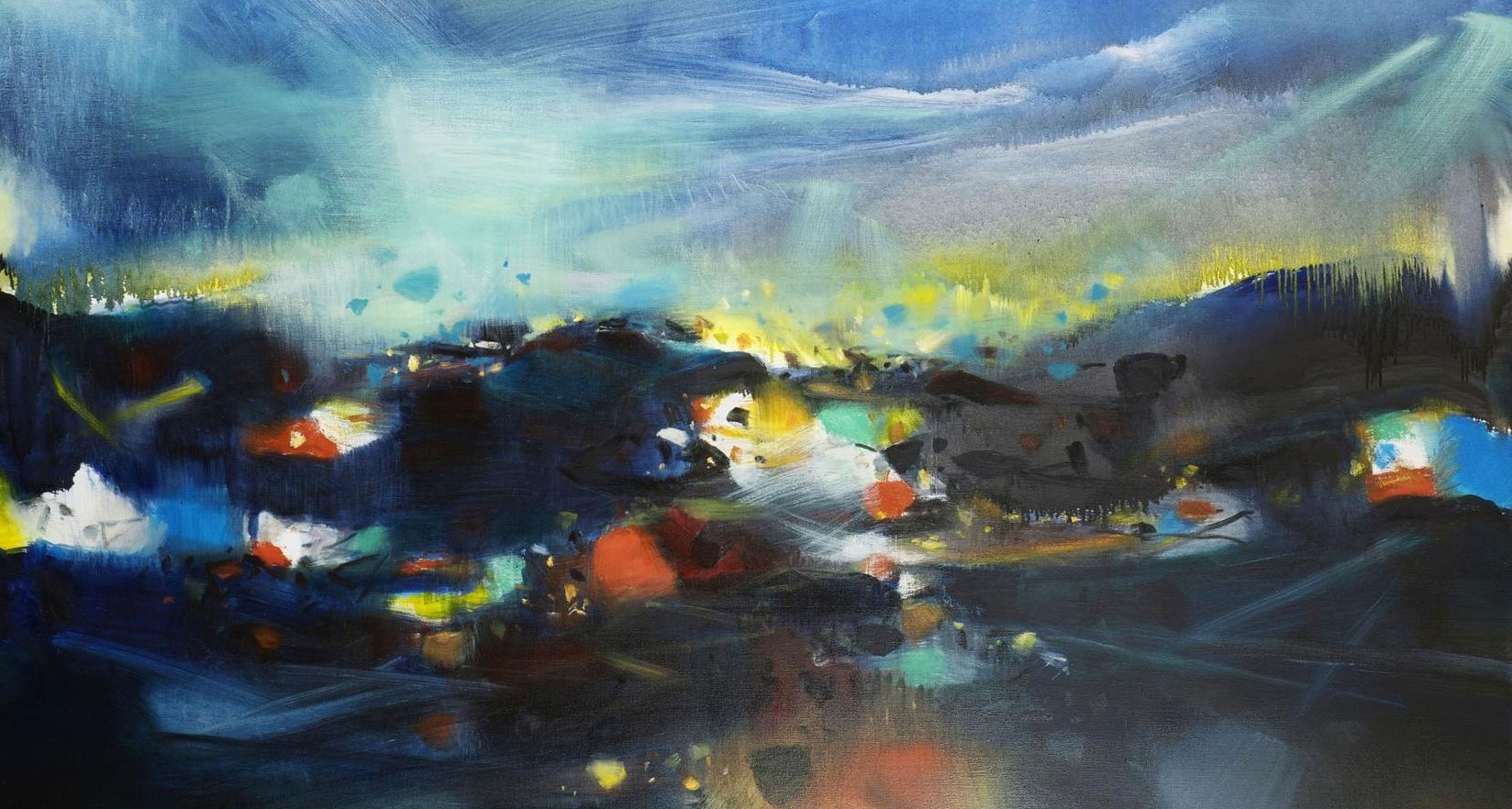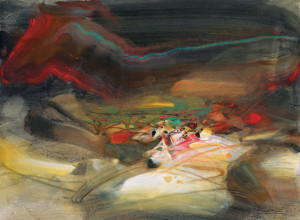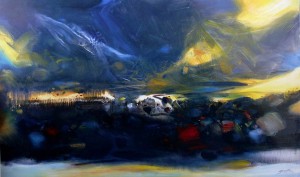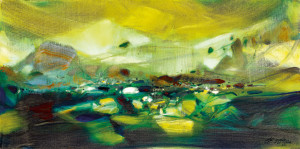Chu Teh-Chun
Early in his artistic career, Chu Teh-Chun was inspired by the French impressionist Paul Cézanne. His early landscape paintings were done in a figurative style clearly influenced by impressionism notably by Cézanne. His work changed dramatically after his first visit to Germany in 1972. His landscape paintings become more abstract, more lively and more intense. His discovery of German Expressionism seems to to have opened a door to a previously closed room in the artist’s soul. Although he fully commits to German Expressionism, he never lets go of his Chinese heritage. A perfect example of how German Expressionism first spread through Europe, and then through the world and how it got enriched every step of the way.
Chu Teh-Chun, a German Expressionist
Chu Teh-Chun comes back to Germany time and time again. Through the years he visits several exhibits of the Dutch painter Hubert Roestenburg . The last time as recent as 2006. It’s so interesting is to see landscape paintings by Chu Teh-Chun and landscape paintings by Hubert Roestenburg side by side. The kinship is clearly there. Not in style or technique, although they do often have a similar point of view. What Chu Teh-Chun, Hubert Roestenburg but also Wassily Kandinsky have in common is their abstract depiction of natural scenery. It’s exciting to see how these three giants of German Expressionism handle landscape painting in the same spirit, but yet execute it so differently. Kandinsky the composer/professor produces paintings of idyllic beauty and supreme harmony. Roestenburg “the wild man” of German Expressionism always pours out his heart and soul on the canvas, sometimes sweet, sometimes devastatingly brutal but always totally engaging. And then there is Chu Teh-Chun the zen master/painter. He ads an unprecedented level of lyricism to his paintings and in doing so single-handedly re-invents German Expressionism Chinese style.













